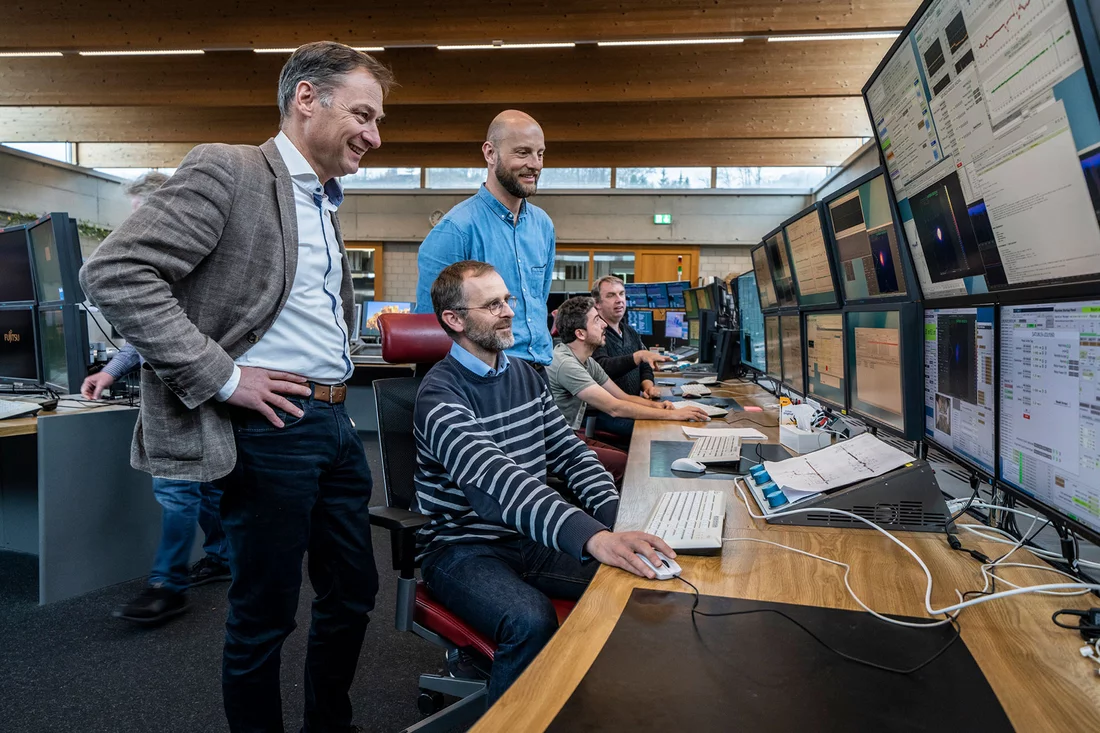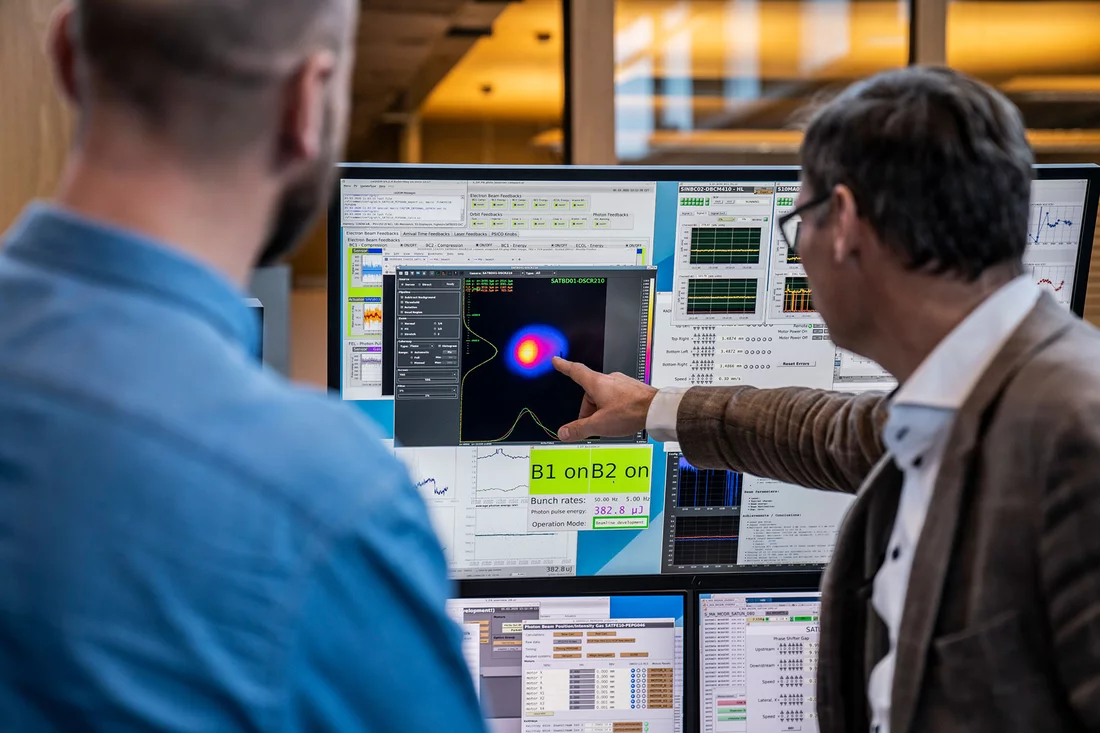The new beamline at the X-ray free-electron laser SwissFEL will soon be ready for action: Completion works are right on schedule. Athos recently delivered laser light for the first time – to the delight of the PSI researchers responsible for it, even earlier than expected. The first experimental station should be ready in April and will probably go into operation at the end of the year.
On 17 December, the time had come: The researchers made a first attempt to see if Athos could deliver – that is, to produce X-ray laser light. With this light, the second beamline will make completely new investigations possible in the future. No one could have expected that the first attempt would be successful: After all, only a fraction of the planned device in which laser light will be generated had been set up. "We thought we would give it a try anyway," says Romain Ganter, a physicist in the Laboratory for Accelerator Technologies and project leader for the accelerator section of Athos. "And in fact it worked! We were surprised ourselves."
This "first lasing" was a crucial milestone. "The Athos project is now on the home stretch," explains Luc Patthey, head of the Laboratory for Advanced Photonics and project leader for the optical part as well as for the experiments to be conducted at Athos. "The next milestone will be the arrival of the laser beam in the experimental station."
Electrons on a slalom course
In the X-ray free-electron laser SwissFEL, an electron beam is deflected from its straight path by magnets over a distance of dozens of metres and brought onto a slalom course. This creates X-ray light that amplifies itself into X-ray laser light. The first beamline at SwissFEL, Aramis, went into operation in 2017. Athos is expected to follow this year. Upon completion, the beamline will deliver 100 X-ray pulses per second.
In contrast to Aramis, Athos emits less energetic X-rays, which the researchers refer to as "soft" radiation. This enables completely different investigations. While Aramis helps to reveal the secrets of individual atoms, researchers want to use Athos to watch molecules undergo chemical reactions and probe the exotic properties of so-called quantum materials, Luc Patthey says.
The design of Athos also distinguishes it from its neighbouring beamline. "Nowhere in the world is there another X-ray laser with this structure," says Romain Ganter proudly. In the new beamline, two types of components alternate again and again over 60 metres: undulators, in which 800 magnets direct electrons onto a slalom path, as well as magnetic "chicanes" – additional, very strong magnets. "With the chicanes, you can compress the individual cigar-shaped electron bunches that make up an electron beam in the longitudinal direction or shift them crosswise," explains Ganter.
Early success
When Athos is finished, 16 undulators will alternate with 15 chicanes. On 17 December, there were only two undulators with one chicane in between – but even that was enough. "As soon as we put the chicane into operation, we saw on the screen in the control room how the diffuse disk representing the X-ray light got focused into a very small spot – we had an X-ray laser beam!" says Ganter happily. This shows that everything works extremely well and that the electron beam is of high quality.
Another worldwide distinctive feature of Athos will be the cross-shaped structure of the undulators. It makes it possible to move four rows of magnets in different directions, independently of one another, and thus to change the properties of the X-ray beam very flexibly as required.
"It's going to get exciting soon for the experimental station’s scientists," Ganter promises. The first experimental station, called Maloja, is currently under construction. There researchers will be able to study the outer shell electrons of molecules in order to learn more about the dynamics of chemical reactions.
Text: Paul Scherrer Institute/Brigitte Osterath
Contact
Dr. Romain Ganter
Laboratory for Accelerator Technologies
Paul Scherrer Institute, Forschungsstrasse 111, 5232 Villigen PSI, Switzerland
Telephone: +41 56 310 52 79, e-mail: romain.ganter@psi.ch [German, English, French]
PD Dr. Luc Patthey
Laboratory for Advanced Photonics
Paul Scherrer Institute, Forschungsstrasse 111, 5232 Villigen PSI, Switzerland
Telephone: +41 56 310 45 62, e-mail: luc.patthey@psi.ch [German, English, French]


